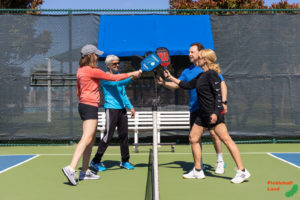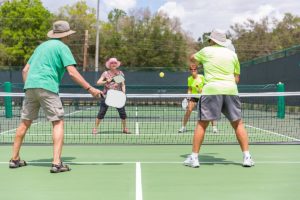Pickleball serving has some other unique rules we’ll cover so you are ready to start playing. Then we will cover some advanced serving techniques.
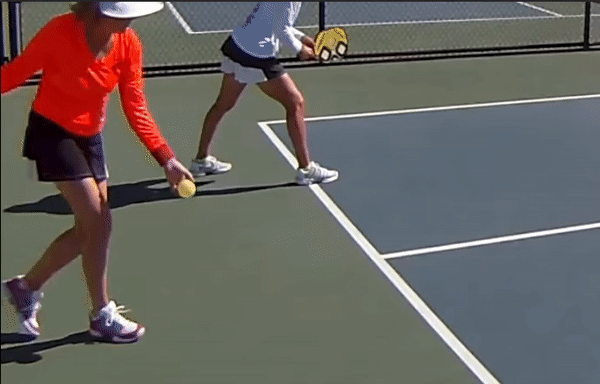
Table of Contents
ToggleServing Rules
Players must serve from behind the baseline and either on the left or right side of the center line. The server must call the score and then serve the ball into the service area diagonally across the court. All serves must be underhand and served below the waist.
The ball may not land in the non-volley zone or touch the line at the front of the service area. The other lines are considered in. The server continues serving if they score and must switch sides after each serve.
Click here to download the Official USAPA Rulebook [PDF].
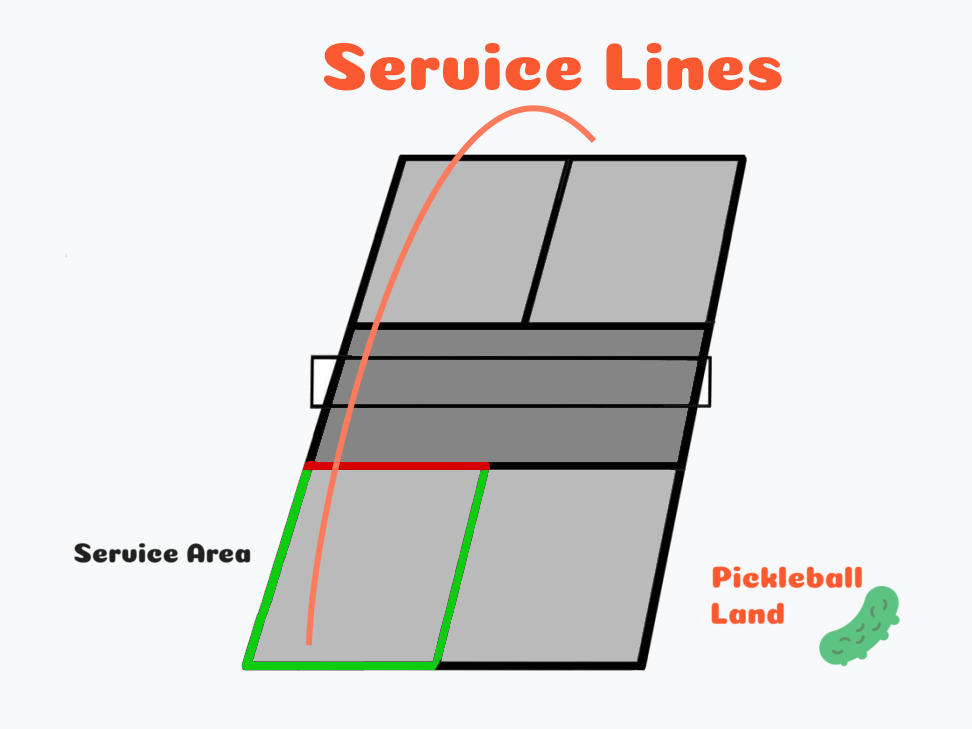
Singles Serving Rules
In singles, each player serves until they lose a point. You must switch the side you are serving from after each serve. In singles, if your score is even you serve from the right side of the court. If you score is odd, serve from the left. When you call out the score say your score before your opponent’s score.
Doubles Serving Rules
Each player on a team gets a chance to serve before the serve switches back to the opposing team. At the start of the game the second server for the first team is skipped.
After each sideout, the serve starts from the right side. Then the serve alternates sides after each serve. Player position and rules about which player servers first and from which side are complicated. The easiest way to learn is by playing with a more experienced player who can show you. Check out our article on doubles serve position rules for more information.
Two-Bounce Rule
Pickleball has a number of unique rules designed to keep the game balanced and fun. One such rule is the two-bounce rule. The two-bounce rules says that both the serve and the return from the serve must be groundstrokes. This means Bob’s serve must bounce before Alice can return it. Then Bob must wait and let Alice’s return bounce before he can return it.
After the serve and first return players are then allowed to volley the ball. A volley is when you hit the ball before it bounces on the ground. If you let the ball bounce first then it’s a groundstroke.
What is a “let” in Pickleball?
A let is when a rally is redone for any reason. No point is scored after a let. A let can happen if something outside the game interferes with play. E.g. your dog catches the ball and runs off with it. But the most common type of let is a service let.
A service let occurs when the ball hits the net on a serve but still lands in the proper service court. This usually happens when the ball glances the top of the net. If a service let occurs then the serve is repeated without any penalty. Any player or referee can call a let. There is no limit on the number of consecutive lets.
If the ball hits the net on a serve and does not go over the net it is a fault. Also if the ball hits the net on a serve, goes over the net, and lands in the “kitchen” or outside of the service court then it is a fault. If the ball hits the net on any shot other than the serve the ball is in play.
Steps-by-step: How to serve in Pickleball
Step 1: Get in the right position. As we mentioned above, the serving positions depend on whether you’re playing singles or doubles and are also based on the score.
Step 2: Call the score out. Always say your score first. If you are playing doubles make sure to say the serve number before the score.
Step 3: Decide how you want to serve the ball and where you are aiming. We will go over some of the different types of serves next.
Step 4: Compose yourself. Take a deep break. It helps to have a routine before you serve like a basketball player shooting a free throw.
Step 5: With the ball in your opposite had, reach out in front of you and drop the ball. Don’t throw the ball up.
Step 6: As you drop the ball swing your paddle underhand and contact the ball in front of your body.
Step 7: Follow through. Your swing should have a smooth relaxed follow through.
Step 8: Get ready for your opponent’s return.
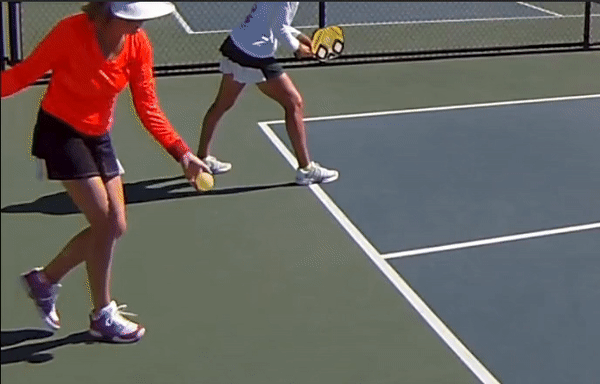
Three Types of Advanced Servers
After playing pickleball a few times you may start to wonder how to improve your game. Because you can only score on your serve, the serve is a very important part of the game. Recently I spoke to some of the advanced players at our local gym to learn about serving techniques.
There are three types of serves in pickleball:
- High Soft Serve
- Power Serve
- Soft Angle Serve
Each of these techniques has advantages. Mixing up your serves can keep your opponent guessing and greatly improve your game.
High Soft Serve
The high-soft serve is when you hit a high arc deep into your opponent’s court. This serve can be used at any level from beginner to 5.0 (read more about pickleball levels). There is a lot of variety with this serve which makes it great for changing the pace of the game and keeping your opponent on their toes.
You can aim your high-soft serve for the back or front of the serve area. This can be used to make your opponent move, get them out of position, and set up your next shot.
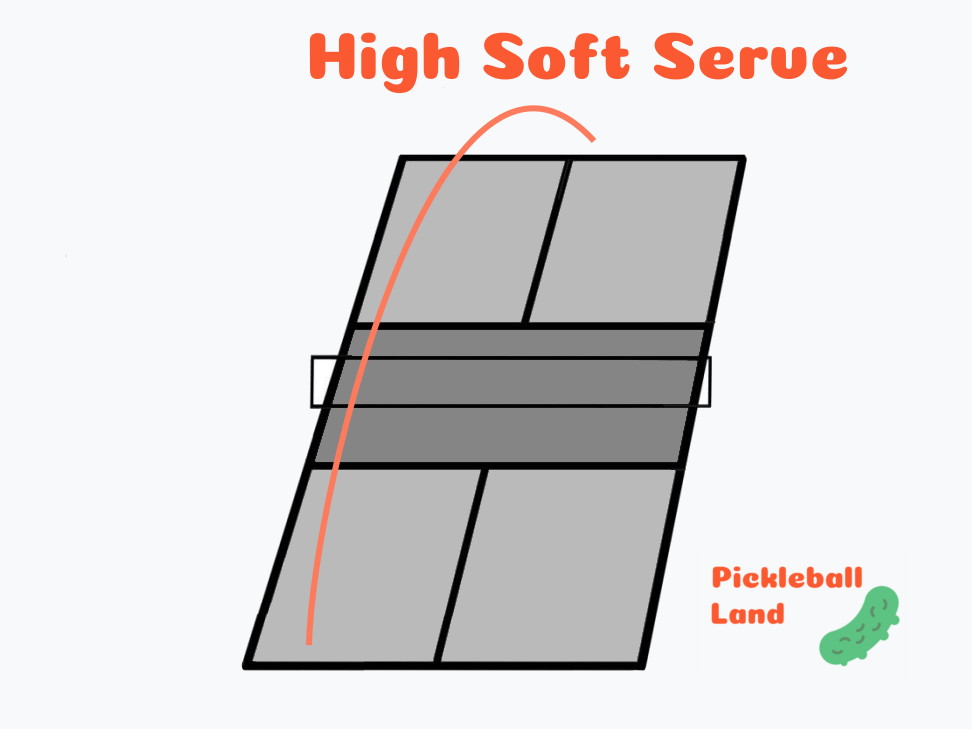
When to Use
You may think hitting the ball hard and fast is always better. But pickleball is a game of finesse. If your opponent gets used to returning power serves, the high-soft serve can be a good changeup. This serve can also be used to draw the other team closer so you can hit a power serve right passed them.
Advantages
This is a great serve for all levels. The high slow arc changes the pace of the game and keeps your opponent guessing. The high arc keeps your opponent back away from the net.
Finally, this serve forces the other player to put their own speed on the ball. With some serves, the opponent can just block the ball with their paddle. Make your opponent do the work. This increases the chance they will make a mistake.
Power Serve
The power serve is low, fast, and deep into your opponent’s court. To mix it up, you can aim for the forehand corner, the backhand corner, or straight at you opponent. The power serve is harder to pull off than the high-soft serve but it’s an essential tool if you want to improve your game.
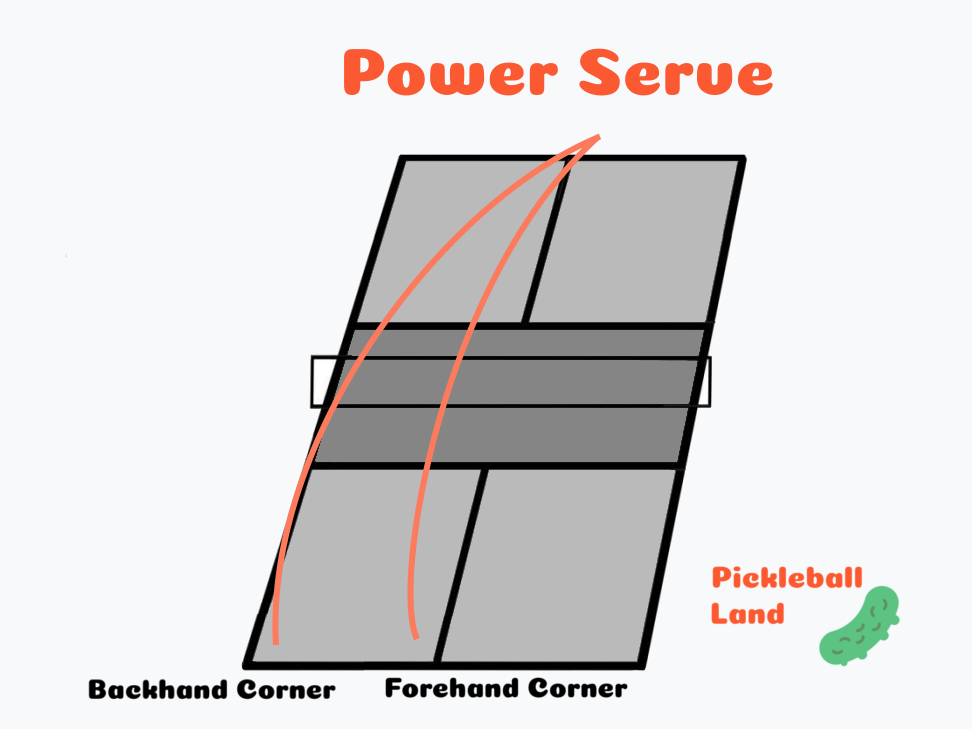
When to Use
If you know your opponent has a weak backhand, this can be a good shot to force them to make mistakes. Also, if the other player is not so quick, hitting the ball straight at them forces them to move to one side. Returning a serve is always harder if your feet are not set.
The power serve can also be used perfectly in combination with the the high-soft serve. After serving a few high-soft serves the other player might start moving forward. If they stand inside the court ready to return your serve it is a perfect time for a power serve right at their feet.
Advantages
This is an advanced serve technique that requires a lot of practice. This serve lets you target the forehand or backhand corners which force your opponent to use their full repertoire of shots. The speed and low arc make the serve difficult to return and limit the other player’s ability to set up shots or put spin on the ball. The speed of this shot also keeps the other player back behind the baseline and makes it harder for them move up to the non-volley zone line.
Soft Angle Serve
The soft angle serve is the last of the three main serve types used to mix up the rhythm of the game. This shot drops near the kitchen line and the sideline. The bounce should take the ball outside of the court. The soft angle shot is the most difficult of the three main serves because the target you are aiming for is so small.
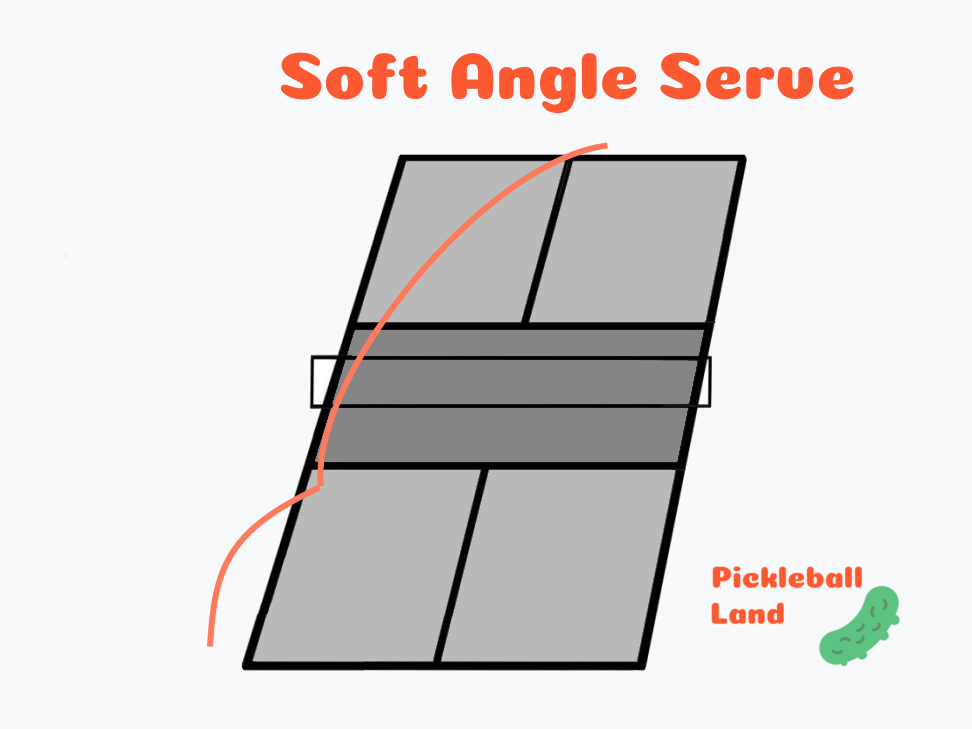
When to Use
Use the soft angle serve when you want to move your opponent off the edge of the court. This leaves a wide open lane on the far side of the court. If the other player does not get back in position fast enough you may have an easy score.
This is also a great serve to use when you are playing doubles and your opponents are stacked. Stacking is a strategy in doubles where both players are on the same side to return the serve. Because both are on the same side, a properly executed soft angle serve can put the opposing team way out of position. This leaves a lane open on the opposite side.
Advantages
The main advantage to this serve is that it puts your opponent out of position. The ball drops near the kitchen which means the other player really has to move. If your opponent does not get back in position you can have an easy shot down the opposite lane or a lob right over their head.
But be careful because this is also the most difficult serve. Remember, you cannot score if you don’t get the serve on the court.
How to Serve an Ace
The pickleball ball is light and hollow which makes it slow down quite a bit due to wind resistance if you hit the ball hard. Due to the ball and the underhand serve rule it is very difficult to hit a serve passed an opponent.
The best way to serve an ace is to hit a few soft short serves first. This will draw the opponent forward when you are serving. Then if the other player is standing inside the court when you serve, you can hit a power serve right at their feet. Unless the player is very quick it will be difficult to return.
Put Spin on Your Serve
Another technique is to serve with spin on the ball. If you come from other racket sports spinning the ball will be very natural. However, due to pickleball’s smooth paddles and balls it can be difficult to get much spin. Even though spin is more limited than in tennis or ping pong, you can still spin the ball some. Putting some side spin on the ball will make your power servers even more difficult to handle. To spin the ball, pull your paddle towards you sharply as you contact the ball.
Practice, Practice, Practice
Each type of serve requires practice. The most important part of the serve is putting the ball in play. You can only score on your serve so it can really hurt your game if you miss more shots when trying these advanced serving techniques.
In addition to just mixing up your serves, remember to think about when to use each of the serves and where you want to place the ball.


